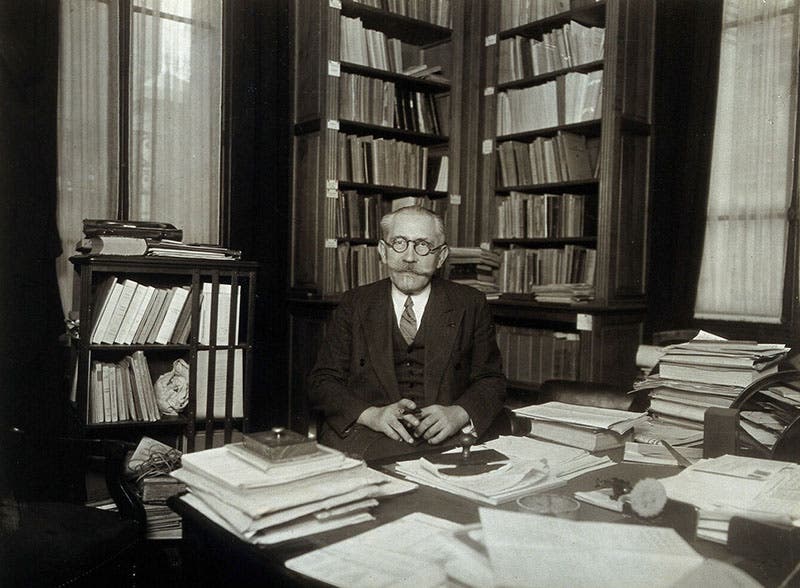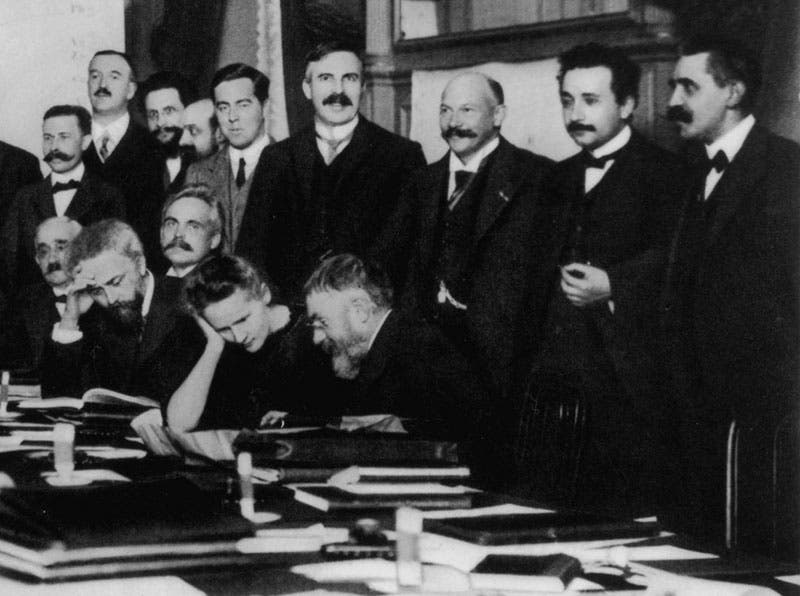Scientist of the Day - Paul Langevin
Paul Langevin, a French physicist, was born Jan. 23, 1872. Langevin studied under Pierre Curie in Paris before Pierre's unfortunate death in 1906, and afterwards taught physics at the Collège de France. During the First World War, he developed a method for detecting submarines by the use of ultrasound, but the war ended before the technology could be put into practice. Langevin was also one of the early advocates of Albert Einstein's special theory of relativity (1905) and was one of the first to elucidate the so-called twin paradox, whereby one twin is sent out at near the speed of light and returns a year or two later (by his or her clock), only to find that the twin counterpart on Earth has aged a great deal more. For Langevin, this was not a paradox at all, but merely a fact in line with the predictions of special relativity.
Langevin is, for better or worse, best remembered today as a lover of Marie Curie. Marie felt the loss of Pierre intensely, while Langevin suffered in a loveless and unhappy marriage, and as the two consoled one another, Paul came to fill the void in Marie’s life left by Pierre’s death, and they became secret lovers in 1910. Langevin’s wife seems to have indeed been something of a shrew, and suspicious of her husband, she found a romantic letter he had written to Marie and accosted him; she even verbally attacked Marie on the streets, which Madame Curie found most unnerving. Word of the affair was leaked to the press in 1911, and the two were attacked mercilessly in French newspapers. Marie was politically left-wing, and she had already been accused by a right-wing press of being Jewish; the Curie-Langevin affair just added grist to the mill for reporters. The scandal almost did in poor Marie, who was a very private person; fortunately, she had friends to protect her and her two children, especially Jean Perrin and his family, whose children had grown up with Marie's oldest daughter, Irène. Indeed, Langevin, Perrin, and Madame Curie had all taught at a school Marie set up at the Sorbonne to educate their children. That must have been some institute of learning.
Marie and Paul gave up seeing each other in private, but they were often together in public, most notably at the first Solvay Conference in Brussels in 1911, where 25 or so invitation-only attendees discussed the new quantum theory. In the official photograph of the participants (second image), Marie is seated at the right, and was the only woman invited; she and Henri Poincaré are captured immersed in some book problem. We show a detail of the right side of the photograph as our third image. Paul Langevin is at far right, next to Albert Einstein, while Jean Perrin, also engrossed in a book, is just to the left of Marie. Ernest Rutherford is standing directly behind Poincaré, and to his right is Heike Kamerlingh Onnes. All except Perrin and Poincaré have been Scientists of the Day in this series at one time or another, and we will do both of them as soon as we can work them in.
Langevin is not known for any great discovery other than his ultrasound work, but he was prominent in French physics because of his visible anti-Nazi and anti-fascist stance in the 1930s, which resulted in his losing his professorship when Paris was occupied by the Nazis and the Vichy government came to power. His job was restored when Paris was liberated in 1944, but he did not long enjoy the fruits of his refurbishment, as he died in 1946, at age 74. He was buried in the Pantheon in Paris. The remains of Marie and Pierre Curie would be moved there in 1995, once French authorities decided it would be OK to inter a woman in that space.
Langevin’s grandson, Michel, a physicist, later married Marie's granddaughter, Hélène, also a physicist, and they had a physicist son. So the affair produced an indirect fruit after all.
Paul Langevin figures prominently in the forthcoming book by Dava Sobel, At Mme. Curie’s Laboratory, which (it is hoped) will be in bookstores by Christmas 2024. I am grateful to Ms. Sobel for allowing me to read the book in manuscript. It is as informative and as wonderfully written as its many predecessors.
William B. Ashworth, Jr., Consultant for the History of Science, Linda Hall Library and Associate Professor emeritus, Department of History, University of Missouri-Kansas City. Comments or corrections are welcome; please direct to ashworthw@umkc.edu.










